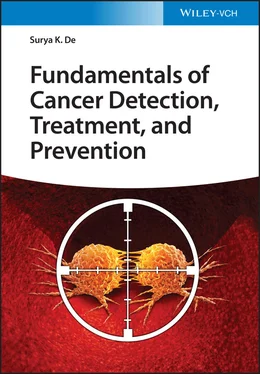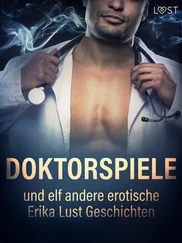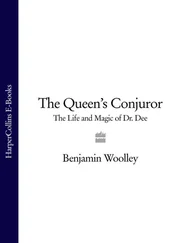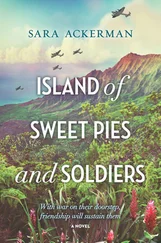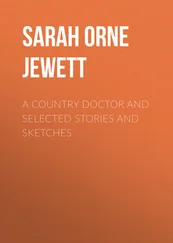Surya K. De - Fundamentals of Cancer Detection, Treatment, and Prevention
Здесь есть возможность читать онлайн «Surya K. De - Fundamentals of Cancer Detection, Treatment, and Prevention» — ознакомительный отрывок электронной книги совершенно бесплатно, а после прочтения отрывка купить полную версию. В некоторых случаях можно слушать аудио, скачать через торрент в формате fb2 и присутствует краткое содержание. Жанр: unrecognised, на английском языке. Описание произведения, (предисловие) а так же отзывы посетителей доступны на портале библиотеки ЛибКат.
- Название:Fundamentals of Cancer Detection, Treatment, and Prevention
- Автор:
- Жанр:
- Год:неизвестен
- ISBN:нет данных
- Рейтинг книги:4 / 5. Голосов: 1
-
Избранное:Добавить в избранное
- Отзывы:
-
Ваша оценка:
- 80
- 1
- 2
- 3
- 4
- 5
Fundamentals of Cancer Detection, Treatment, and Prevention: краткое содержание, описание и аннотация
Предлагаем к чтению аннотацию, описание, краткое содержание или предисловие (зависит от того, что написал сам автор книги «Fundamentals of Cancer Detection, Treatment, and Prevention»). Если вы не нашли необходимую информацию о книге — напишите в комментариях, мы постараемся отыскать её.
The professional guide to cancer diagnosis and therapy for researchers and clinicians Fundamentals of Cancer Detection, Treatment, and Prevention,
Fundamentals of Cancer Detection, Treatment, and Prevention
Fundamentals of Cancer Detection, Treatment, and Prevention — читать онлайн ознакомительный отрывок
Ниже представлен текст книги, разбитый по страницам. Система сохранения места последней прочитанной страницы, позволяет с удобством читать онлайн бесплатно книгу «Fundamentals of Cancer Detection, Treatment, and Prevention», без необходимости каждый раз заново искать на чём Вы остановились. Поставьте закладку, и сможете в любой момент перейти на страницу, на которой закончили чтение.
Интервал:
Закладка:
94 94 Steenland, K., Silverman, D.T., and Zaebst, D. (1992). Exposures to diesel exhaust in the trucking industry and possible relationships with lung cancer. American Journal of Industrial Medicine 21: 887–890.
95 95 Vermeulen, R., Silverman, D.T., Garshick, E. et al. (2014). Exposure‐response estimates for diesel engine exhaust and lung cancer mortality based on data from three occupational cohorts. Environmental Health Perspectives 122: 172–177.
96 96 Vogel, L. (2017). Fracking tied to cancer‐causing chemicals. CMAJ 189 (2): E94–E95.
97 97 Jaklitsch, M.T., Jacobson, F.L., Austin, J.H. et al. (2012). The American Association for thoracic surgery guidelines for lung cancer screening using low‐dose computed tomography scans for lung cancer survivors and other high‐risk groups. The Journal of Thoracic and Cardiovascular Surgery 144: 33–38.
98 98 Markowitz, S.B., Levin, S.M., Miller, A., and Morabia, A. (2013). Asbestos, asbestosis, smoking, and lung cancer. New findings from the North American insulator cohort. American Journal of Respiratory and Critical Care Medicine 188: 90–96.
99 99 Hauptmann, M., Stewart, P.A., Lubin, J.H. et al. (2009). Mortality from lymphohematopoietic malignancies and brain cancer among embalmers exposed to formaldehyde. Journal of the National Cancer Institute 101 (24): 1696–1708.
100 100 Hauptmann, M., Lubin, J.H., Stewart, P.A. et al. (2003). Mortality from lymphohematopoietic malignancies among workers in formaldehyde industries. Journal of the National Cancer Institute 95 (21): 1615–1623.
101 101 Beane Freeman, L., Blair, A., Lubin, J.H. et al. (2009). Mortality from lymphohematopoietic malignancies among workers in formaldehyde industries: The National Cancer Institute Cohort. Journal of the National Cancer Institute 101 (10): 751–761.
102 102 Pinkerton, L.E., Hein, M.J., and Stayner, L.T. (2004). Mortality among a cohort of garment workers exposed to formaldehyde: An update. Occupational and Environmental Medicine 61: 193–200.
103 103 Coggon, D., Harris, E.C., Poole, J., and Palmer, K.T. (2003). Extended follow‐up of a cohort of British chemical workers exposed to formaldehyde. Journal of the National Cancer Institute 95 (21): 1608–1615.
104 104 Hauptmann, M., Lubin, J.H., Stewart, P.A. et al. (2004). Mortality from solid cancers among workers in formaldehyde industries. American Journal of Epidemiology 159 (12): 1117–1130.
105 105 Lelieveld, J., Evans, J., Fnais, M. et al. (2015). The contribution of outdoor air pollution sources to premature mortality on a global scale. Nature 525: 367–371.
106 106 Turner, M.C., Andersen, Z.J., Baccarelli, A. et al. (2020). Outdoor air pollution and cancer: an overview of the current evidence and public health recommendations. CA: A Cancer Journal for Clinicians 70: 460–479.
107 107 Stadler, R.H., Blank, I., Varga, N. et al. (2002). Acrylamide from Maillard reaction products. Nature 419 (6906): 449–450.
108 108 Mottram, D.S., Wedzicha, B.L., and Dodson, A.T. (2002). Acrylamide is formed in the Maillard reaction. Nature 419 (6906): 448–449.
109 109 Kita, A., Brathen, E., Knutsen, S.H., and Wicklund, T. (2004). Effective ways of decreasing acrylamide content in potato crisps during processing. Journal of Agricultural and Food Chemistry 52 (23): 7011–7016.
110 110 Virk‐Baker, M.K., Nagy, T.R., Barnes, S., and Groopman, J. (2014). Dietary acrylamide and human cancer: a systematic review of literature. Nutrition and Cancer 66 (5): 774–790.
111 111 Friedman, M. (2003). Chemistry, biochemistry, and safety of acrylamide. A review. Journal of Agricultural and Food Chemistry 51 (16): 4504–4526.
112 112 Dearfield, K.L., Abernathy, C.O., Ottley, M.S. et al. (1988). Acrylamide: its metabolism, developmental and reproductive effects, genotoxicity, and carcinogenicity. Mutation Research 195 (1): 45–77.
113 113 Lipworth, L., Sonderman, J.S., Tarone, R.E., and McLaughlin, J.K. (2012). Review of epidemiologic studies of dietary acrylamide intake and the risk of cancer. European Journal of Cancer Prevention 21 (4): 375–386.
114 114 Fennell, T.R. and Friedman, M.A. (2005). Comparison of acrylamide metabolism in humans and rodents. Advances in Experimental Medicine and Biology 561: 109–116.
115 115 Gargas, M.L., Kirman, C.R., Sweeney, L.M., and Tardiff, R.G. (2009). Acrylamide: consideration of species differences and nonlinear processes in estimating risk and safety for human ingestion. Food and Chemical Toxicology 47 (4): 760–768.
116 116 Mulloy, K.B. (1996). Two case reports of neurological disease in coal mine preparation plant workers. American Journal of Industrial Medicine 30 (1): 56–61.
117 117 Pelucchi, C., La Vecchia, C., Bosetti, C. et al. (2011). Exposure to acrylamide and human cancer‐‐a review and meta‐analysis of epidemiologic studies. Annals of Oncology 22 (7): 1487–1499.
118 118 Cohen, S.M. and Arnold, L.L. (2011). Chemical carcinogenesis. Toxicological Sciences 120 (suppl_1): S76–S92.
119 119 Beyersmann, D. and Hartwig, A. (2008). Carcinogenic metal compounds: recent insight into molecular and cellular mechanisms. Archives of Toxicology 82 (8): 493–512.
120 120 Tricker, A.R. and Preussmann, R. (1991). Carcinogenic N‐nitrosamines in the diet: occurrence, formation, mechanisms and carcinogenic potential. Mutation Research/Genetic Toxicology 259 (3–4): 277–289.
121 121 Bolton, J.L. and Thatcher, G.R. (2008). Potential mechanisms of estrogen quinone carcinogenesis. Chemical Research in Toxicology 21 (1): 93–101.
122 122 Scanlan, R.A. (1983). Formation and occurrence of nitrosamines in food. Cancer Research 43 (5 Suppl): 2435–2440.
123 123 Virk‐Baker, M.K., Nagy, T.R., Barnes, S., and Groopman, J. (2014). Dietary acrylamide and human cancer: a systematic review of literature. Nutrition and Cancer 66 (5): 774–790.
124 124 Mottram, D.S., Wedzicha, B.L., and Dodson, A.T. (2002). Acrylamide is formed in the Maillard reaction. Nature 419 (6906): 448–449.
125 125 Tamanna, N. and Mahmood, N. (2015). Food processing and maillard reaction products: effect on human health and nutrition. International Journal of Food Science 2015: 526762.
126 126 Stadler, R.H., Robert, F., Riediker, S. et al. (2004). In‐depth mechanistic study on the formation of acrylamide and other vinylogous compounds by the maillard reaction. Journal of Agricultural and Food Chemistry 52 (17): 5550–5558.
127 127 American Cancer Society (2018). ACS guidelines for the early detection of cancer. https://www.cancer.org/healthy/find-cancer-early/cancer-screening-guidelines/american-cancer-society-guidelines-for-the-early-detection-of-cancer.html(accessed 28 November 2018).
128 128 Centers for Disease Control and Prevention (CDC) (2018). Tobacco and cancer. https://www.cdc.gov/cancer/tobacco/index.htm(accessed 1 February 2018).
129 129 National Institutes of Health (NIH)/National Cancer Institute (2018). Risk factors for cancer. https://www.cancer.gov/about-cancer/causes-prevention/risk(accessed 31 January 2018).
130 130 Anand, P., Ajaikumar, B., Sundaram, C. et al. (2008). Cancer is a preventable disease that requires major lifestyle changes. Pharmaceutical Research 25: 2097.
131 131 Skin Cancer Foundation (2018). Skin cancer facts and statistics. https://www.skincancer.org/skin-cancer-information/skin-cancer-facts#general(accessed 31 January 2018).
132 132 World Health Organization (2018). Cancer fact sheet. http://www.who.int/news-room/fact-sheets/detail/cancer(accessed 1 February 2018).
133 133 World Health Organization Cancer fact sheet. http://www.who.int/news-room/fact-sheets/detail/cancer(accessed 1 February 2018).
134 134 World Health Organization (WHO) (2019). Ultraviolet radiation (UV): the known health effects of UV. https://www.who.int/uv/faq/uvhealtfac/en/index1.html(accessed 7 June 2019).
Читать дальшеИнтервал:
Закладка:
Похожие книги на «Fundamentals of Cancer Detection, Treatment, and Prevention»
Представляем Вашему вниманию похожие книги на «Fundamentals of Cancer Detection, Treatment, and Prevention» списком для выбора. Мы отобрали схожую по названию и смыслу литературу в надежде предоставить читателям больше вариантов отыскать новые, интересные, ещё непрочитанные произведения.
Обсуждение, отзывы о книге «Fundamentals of Cancer Detection, Treatment, and Prevention» и просто собственные мнения читателей. Оставьте ваши комментарии, напишите, что Вы думаете о произведении, его смысле или главных героях. Укажите что конкретно понравилось, а что нет, и почему Вы так считаете.
